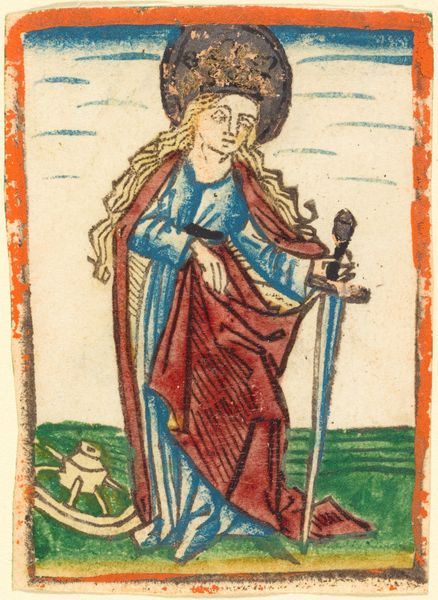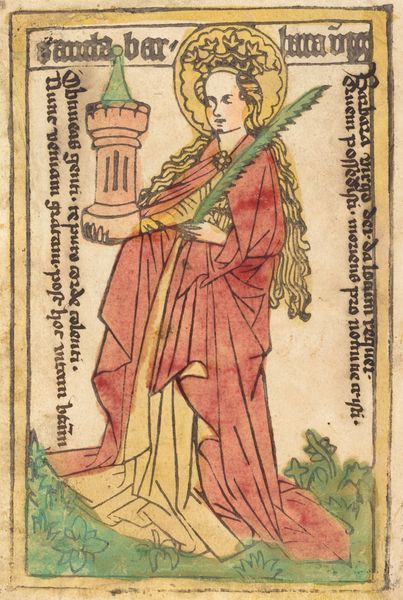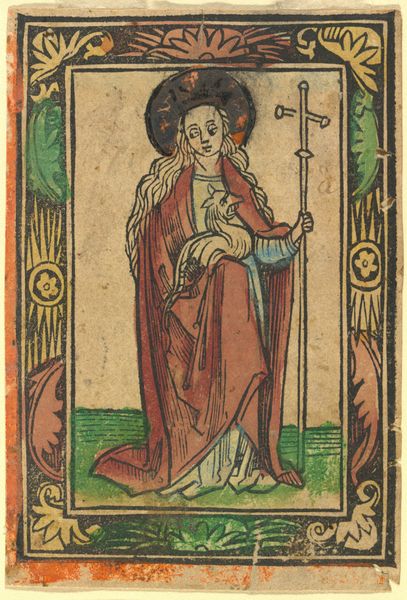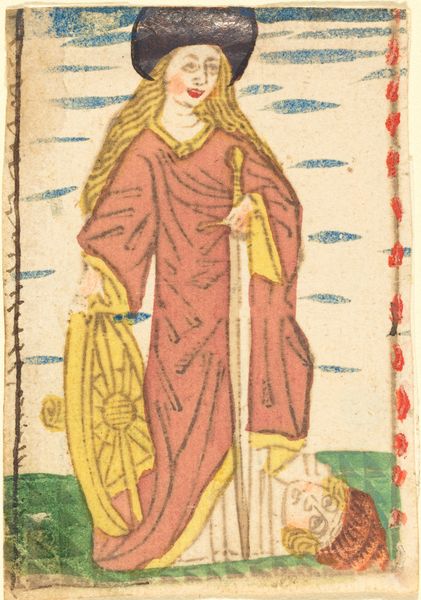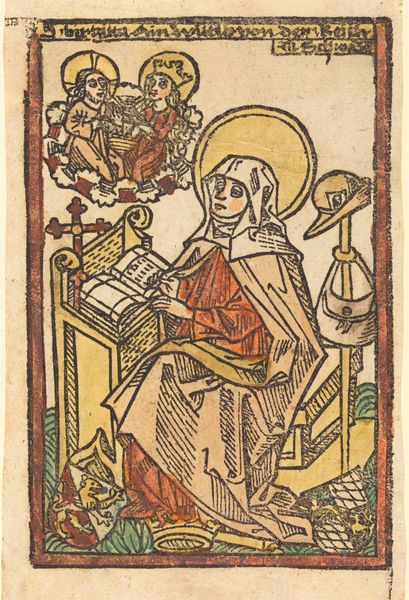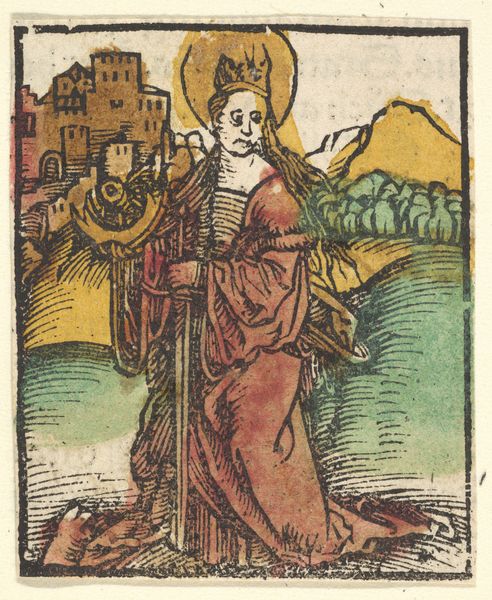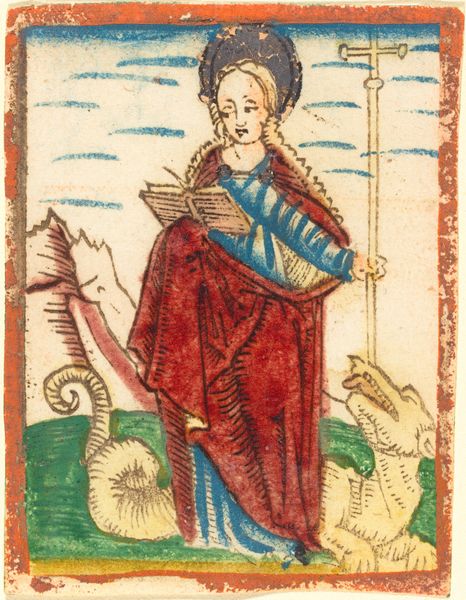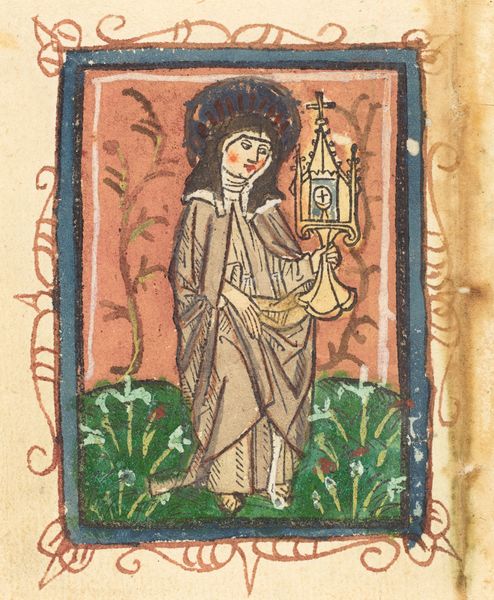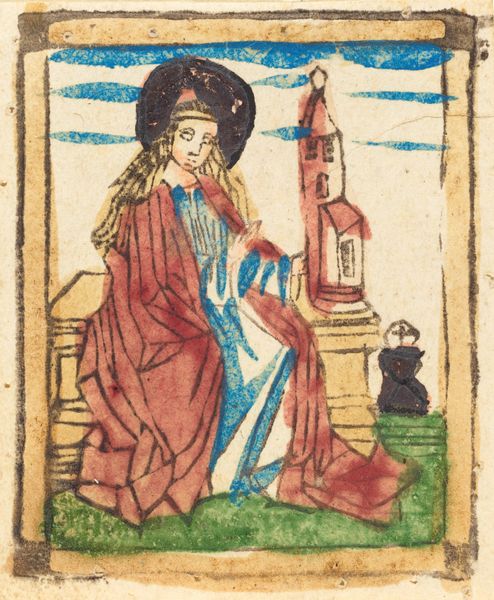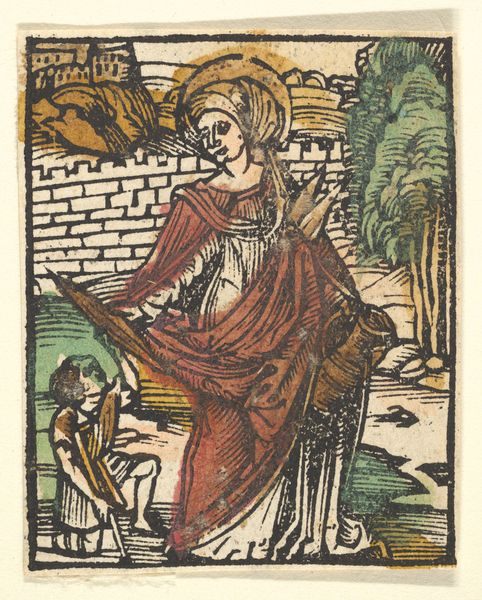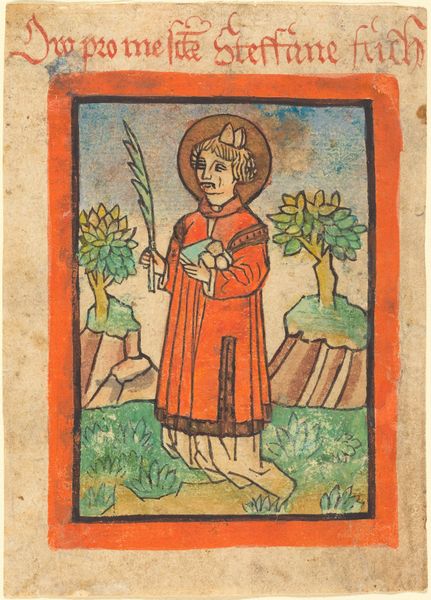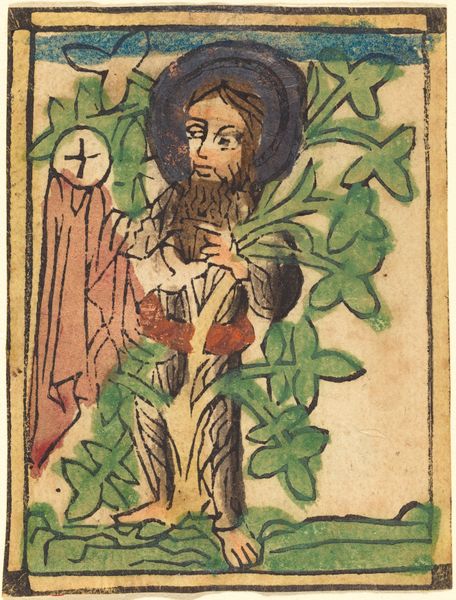
#
aged paper
#
toned paper
# print
#
stain glass
#
tile art
#
coffee painting
#
watercolour illustration
#
cartoon carciture
#
coloring book page
#
doodle art
#
marker colouring
Copyright: National Gallery of Art: CC0 1.0
This image of Saint Bridget was produced anonymously, most likely as a woodcut with added hand-coloring. The texture of the print gives it a definite character; you can almost feel the grain of the wood itself. Woodcuts like this one were relatively inexpensive to produce, and they democratized image-making in Europe. They were the forerunners to postcards and other forms of mass communication, and required the skilled labor of professional woodcutters. Color would have been applied by hand, which was common practice during the period. The artisan would have mixed dry pigments with a binding agent, layering them to build up luminous effects that imitate manuscript illumination. It’s a lovely meeting of printmaking and painting techniques. So when we look at this modest, devotional image, we should appreciate that it emerged from a complex ecosystem of craft, production, and piety. And that simple image could go on to spread its message far and wide.
Comments
No comments
Be the first to comment and join the conversation on the ultimate creative platform.
